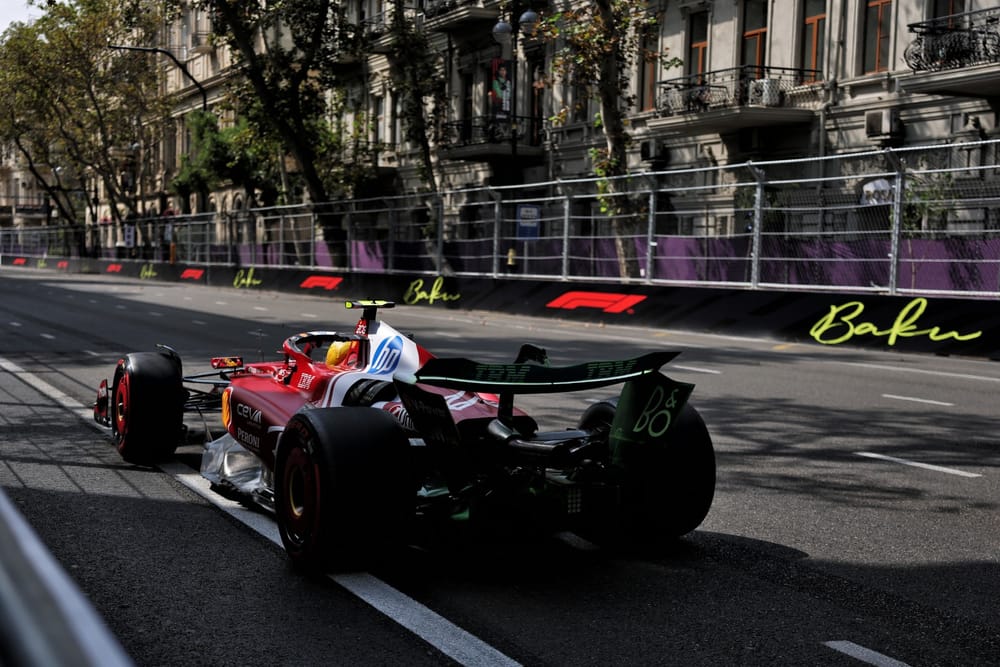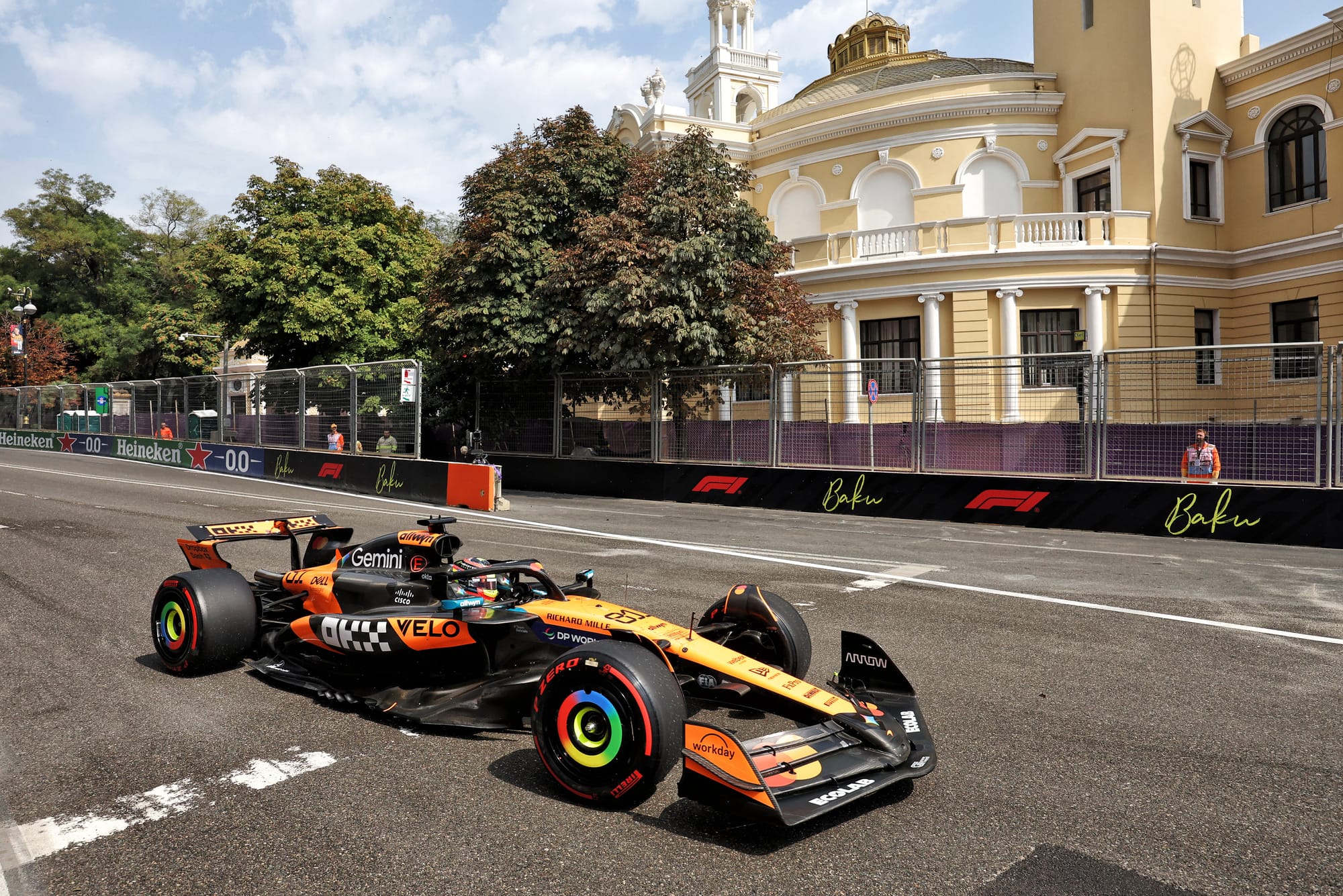Three crucial fundamental choices to be understood and then decided upon this Baku weekend: wing level, tyre choice and towing potential.
So the teams could have done without the loss of half an hour in FP1 to a kerb problem.
McLaren in particular could have done without Lando Norris hitting the wall and missing out on the long runs in FP2. It was quite the scrappiest FP2 of McLaren’s season to date - and although Oscar Piastri managed to remain on track, he too had his moments and the car was not particularly quick.
This was in stark contrast to FP1, when the McLarens looked to have half a second on the field, rather than trailing the pace-setting Ferraris by 1s in the headline FP2 times, with Lewis Hamilton looking in confident form and going quickest. The Ferraris were then quickest on the long runs, too, despite splitting their tyre choice and wing levels.
FP2 long run averages
1 Leclerc (Ferrari) 1m46.212s - soft
2 Hamilton (Ferrari) 1m46.297s - medium
3 Albon (Williams) 1m46.547s - hard
4 Verstappen (Red Bull) 1m46.566s - soft
5 Sainz (Williams) 1m46.792 - medium
6 Piastri (McLaren) 1m46.915s - soft
7 Russell (Mercedes) 1m47.068s - soft
8 Antonelli (Mercedes) 1m47.174s - soft
Wing levels
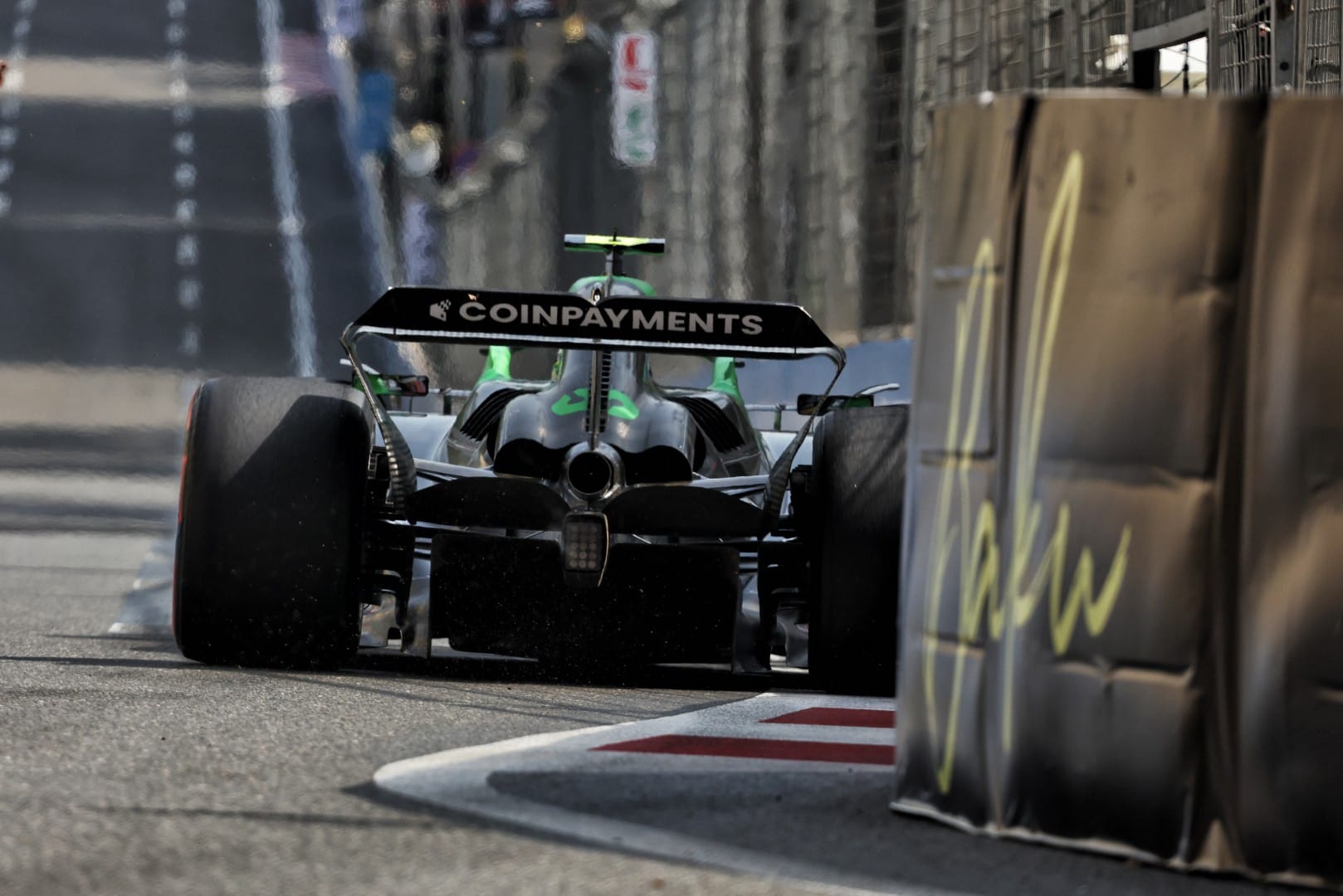
History tells us that a super low-downforce rear wing is probably faster over the contradictory demands of a Baku lap than a conventional medium-low wing, but that the latter will probably be quicker over a race stint.
So there’s a choice to be made, involving game theory, about which will give the better race result: a high grid position and a defensive race, or a lower grid position and an attacking race. It all rather depends upon how many other cars might get between those two options on the grid, hence the game theory.
Tow
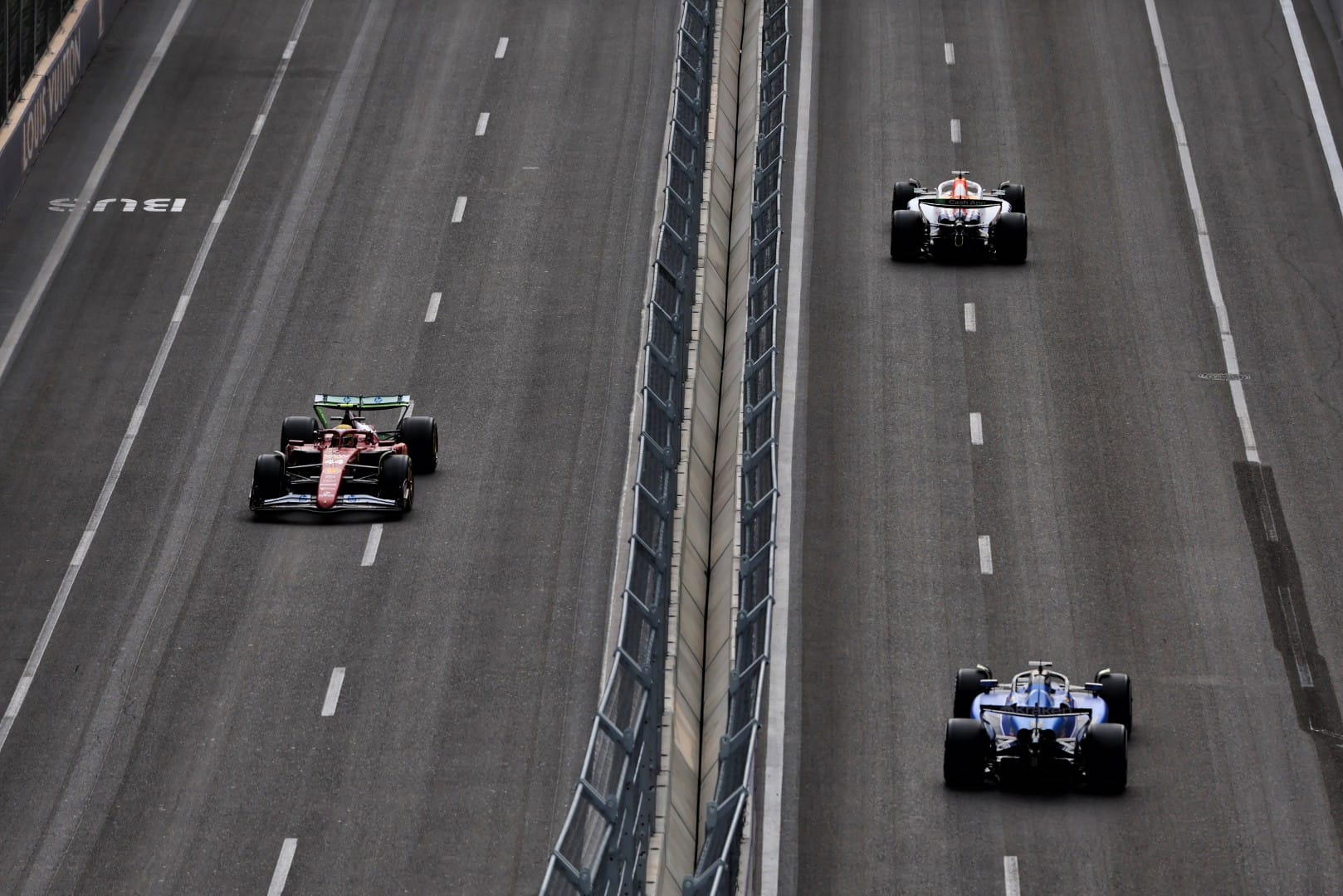
Related to wing levels is the high value of a good tow down the 2km Caspian stretch.
Hamilton’s first attack lap on new softs was compromised by traffic at Turn 10 but the tow he received down the Caspian stretch from Pierre Gasly’s Alpine was worth a very chunky 0.25s.
In a perfect world, the ideal solution would probably be the higher wing to be super-fast through the slow turns and then a Gasly-like tow to overcome the penalty of that down the Caspian. Without the tow, the low wing is likely still faster over a lap.
Tyres
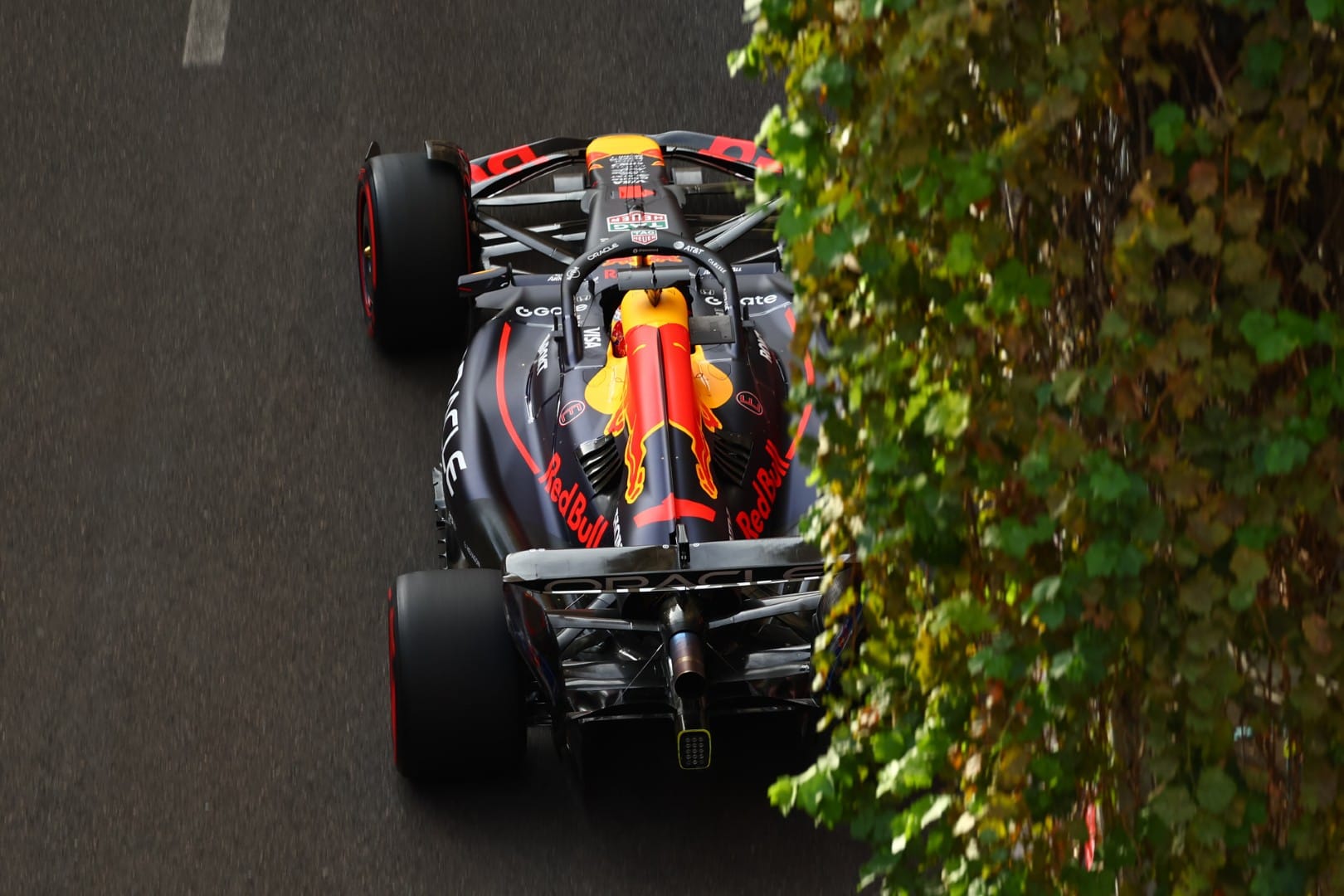
Pirelli has brought the C6 so as to discourage a one-stop race. But just as in Montreal and Imola, Montreal and Monaco it looks like the C5 may actually be faster over a lap – or at least have a more accessible window.
So with only three sets of C5s available and eight sets of C6s, there is a highly strategic element in choosing which tyres to run through the practices.
Within that framework the top four teams each made quite different choices.
Ferrari
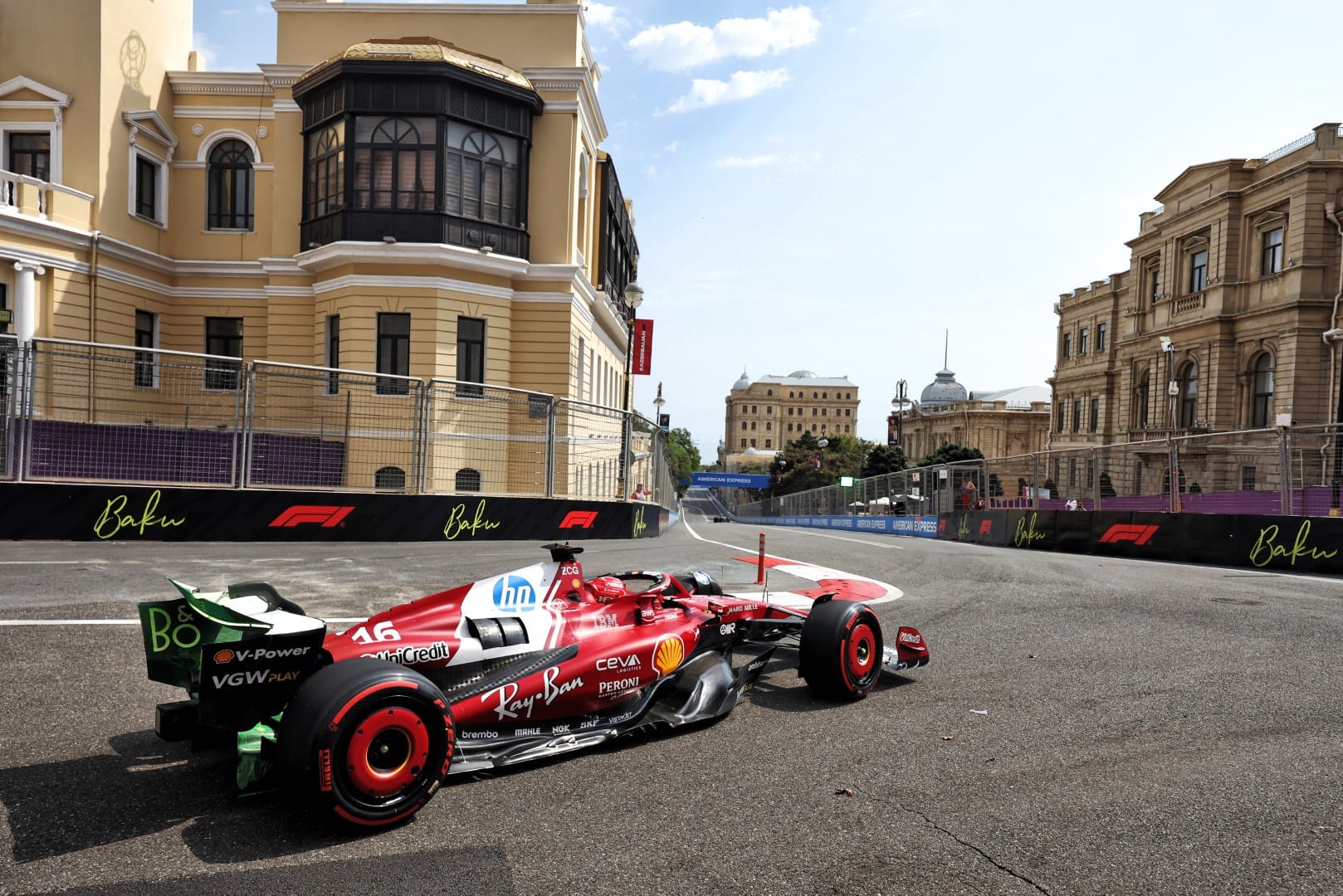
Ferrari ran Charles Leclerc – pole-sitter here for the last four years but still to win the race – with a super low-downforce wing, team-mate Hamilton with the bigger wing. Yet Hamilton was marginally quicker over the lap.
That may not mean too much. The power unit settings do not appear to be the same on the lap comparison, in that Hamilton – without a tow and despite exiting Turn 16 slower than Leclerc – is travelling 6km/h quicker as they go through the kink of Turn 18. It suggests that Ferrari was running Hamilton with a higher power map than Leclerc – probably in an attempt to muddy the waters for rivals. The team will know the laptime value of the PU settings and therefore how the low- and medium-downforce configurations really compare.
What is clear is that Ferrari – always quick around this track where its engine braking traits help it rotate beautifully in the slow sections, the exact same reason it’s also traditionally super-quick at Monaco – has hit the ground running. It is quick on the C5 medium and the C6 soft, quick on the long runs and single laps, quick with Leclerc and with Hamilton.
With Hamilton doing more running on the C5, Leclerc on the C6 and the two different wing levels, Ferrari has a load of valuable data on which to base decisions into qualifying.
Hamilton was predictably very upbeat: “The first session was challenging as I needed to get used to the brakes, but we made some good changes for FP2. The car felt much better, everything started to come together, and my confidence grew lap by lap. It was really positive to have such a strong second session, probably my best FP2 of the year so far.”
Leclerc, however, wasn't convinced the McLaren-beating FP2 performance was reflective: "Overall we seem to be pretty strong, so it's good. But, and there's a big but, it looks like McLaren is in another world, literally.
"And I think people will be very surprised tomorrow, because Lando didn't finish some laps that were very, very impressive."
Mercedes
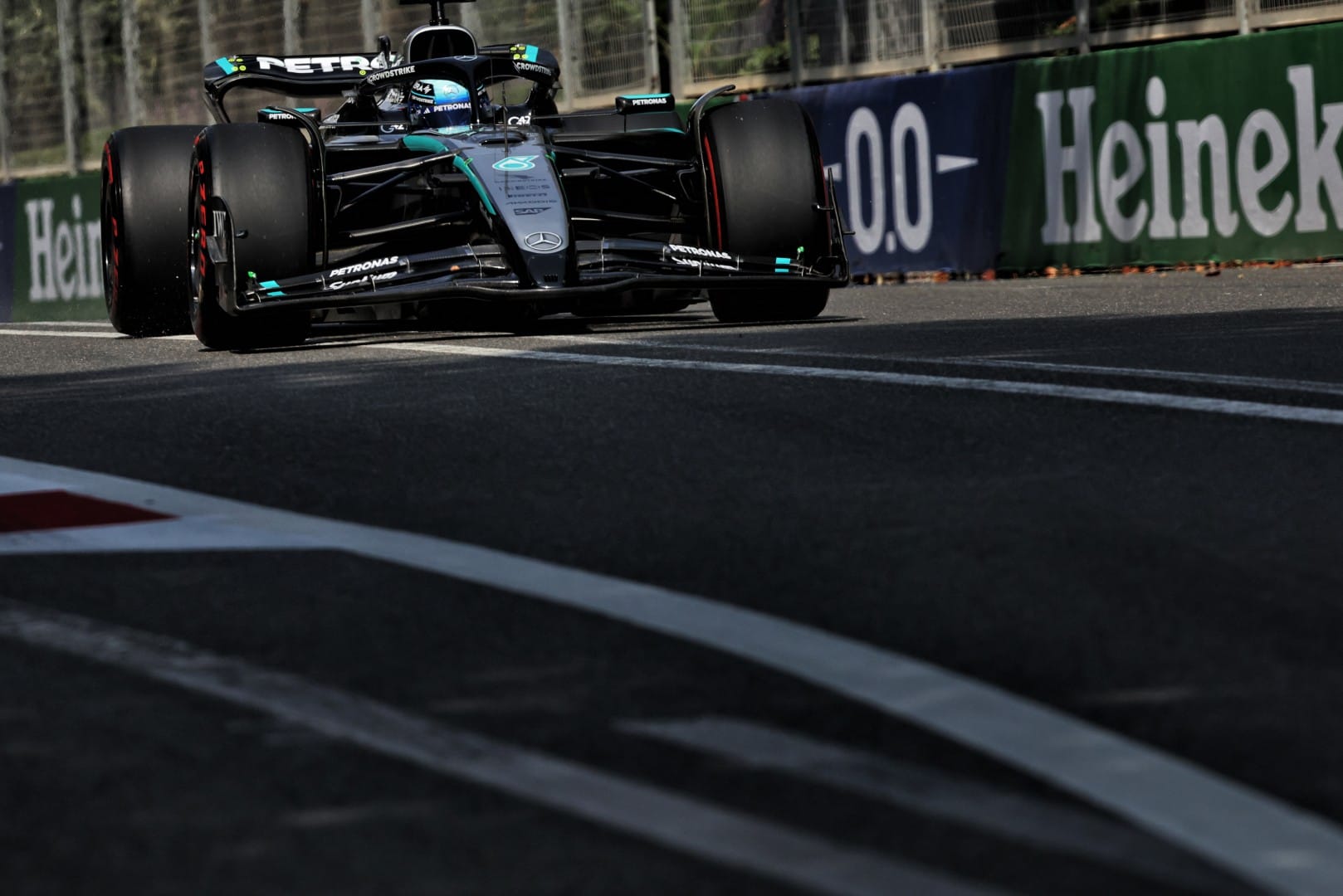
Half a second behind Hamilton in the headline times, the Mercs nonetheless were third- and fourth-fastest, with Kimi Antonelli within hundredths of George Russell and looking comparably quick on the long runs – although again well adrift of Ferrari. And with the high likelihood of McLaren and Red Bull bouncing back tomorrow.
Running less flap area than McLaren, around the same as Red Bull and somewhere in between the two Ferrari wings, Russell loses most of his 0.477s deficit to Hamilton down the initial part of that final flat-out stretch. This suggests either that the Mercedes is a lot less aero-efficient or that the Ferrari is running in a higher power mode (see above). Probably a combination of both.
McLaren
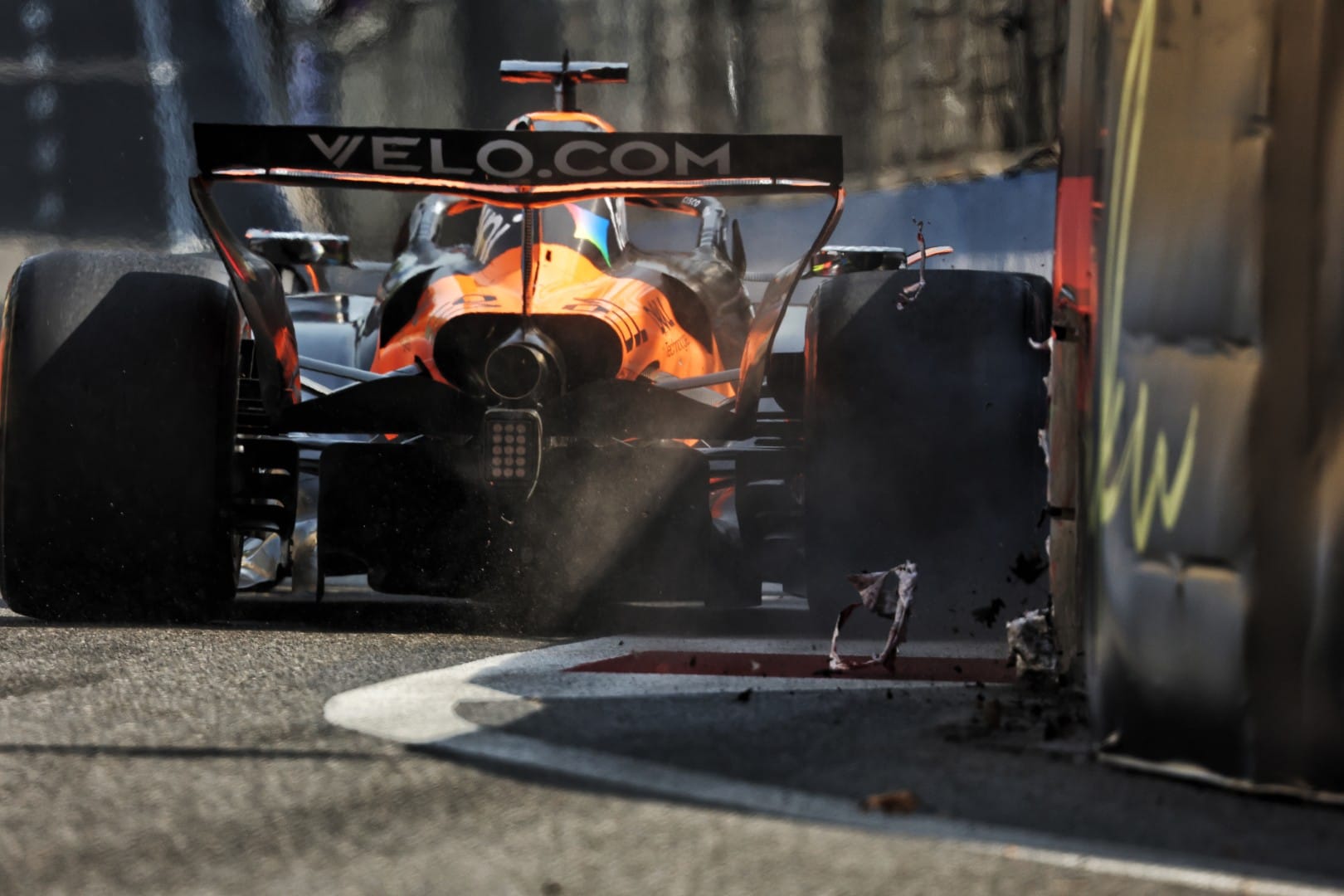
Forget, for a moment, Norris’ impact with the walls (he had impacts at both Turn 2 and Turn 4) - where was Piastri’s pace? He didn’t get his low fuel lap together and was only on Mercedes' pace in the long runs, well adrift of the Ferraris and slower too than Max Verstappen’s far-from-optimised Red Bull.
The McLaren looked a particular handful on the soft tyre as the track grip came up in FP2 and it would be no surprise to see the team leaning into the C5 medium for qualifying.
Both Norris and Piastri have kept all three of their sets and used up three and four sets respectively of their eight C6 softs already.
“I think the pace is there,” said Piastri, “it's just not the easiest to get the most out of at the moment.”
It would seem unlikely this was a representative showing of the MCL39’s potential around here - but it suggests that, despite Leclerc's aforementioned warning, there is a whole lot of clawing back to do for McLaren.
Given that, will it be confident enough in its underlying pace not to revert to a lower-downforce wing?
Red Bull

Max Verstappen had a fairly typical sort of Red Bull Friday, the car initially bottoming out in some braking zones and having a bit too much understeer for his tastes around a circuit he never seems to enjoy. Despite that, he’s quicker in the slow sections than Hamilton – and his long run average is better than anything from McLaren or Mercedes.
After a lot of mechanical changes he’s now got the braking stability he needs but is working on a sharper corner entry. The sort of effective tweaking we saw at Monza between Friday and through Saturday could bounce Verstappen right back into the mix.
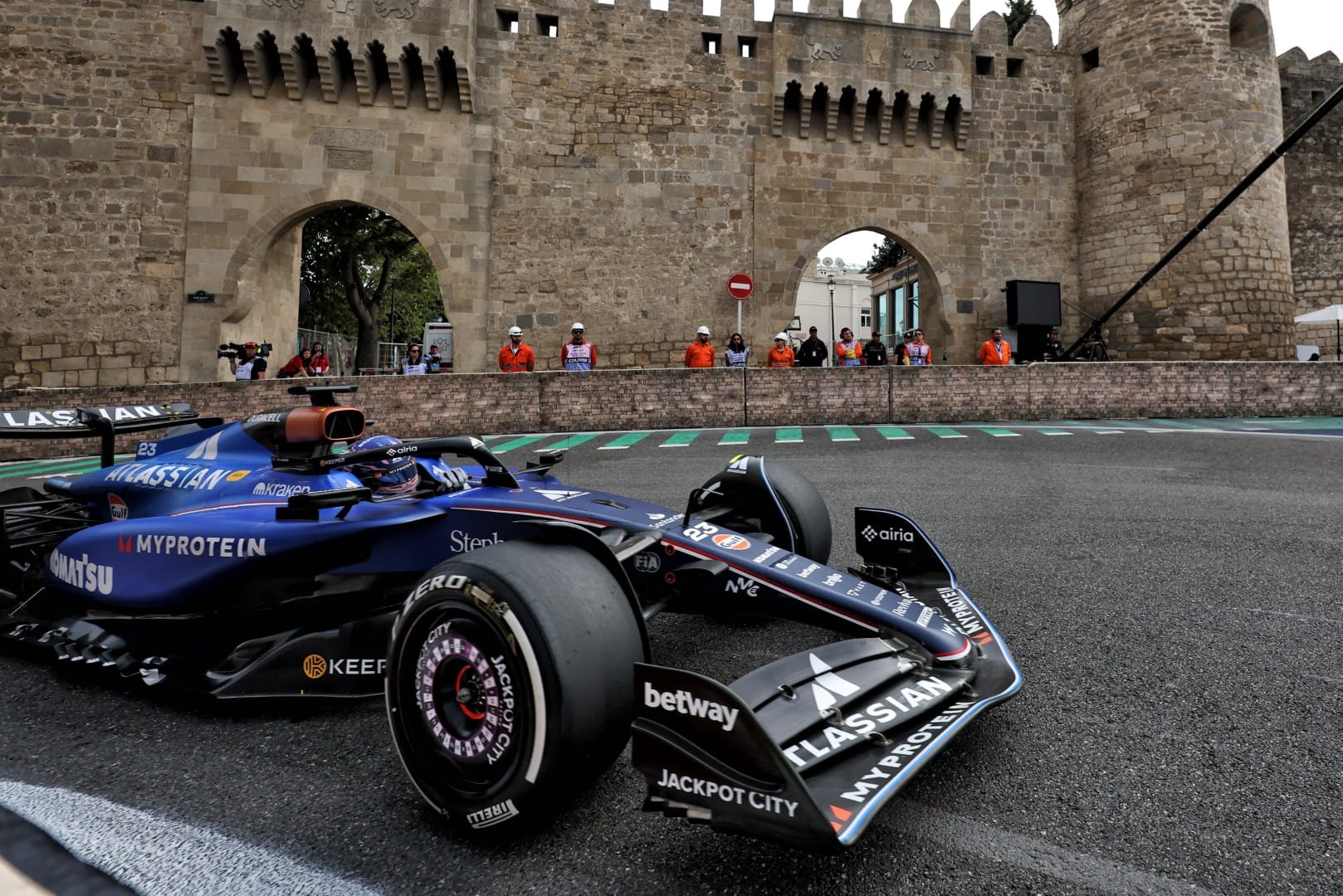
Outside the top four, the Williams looked to have strong pace – with Alex Albon even showing that the hard C4 is probably a better race tyre even than the C5.
As such, might we even see another one-stop despite Pirelli’s best efforts? A more certain way of ensuring the two-stop may have been to have brought a much harder hard.


